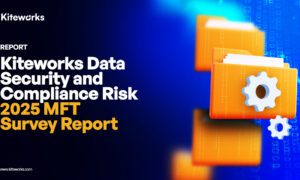Most breaches don’t happen because a firewall failed. They happen because someone clicked. Someone answered. Someone assumed.
That’s why in 2025, cyber awareness training isn’t just a checkbox for compliance — it’s the foundation of any serious cybersecurity strategy.
We used to say that humans are the weakest link. But that’s only true when we don’t train them right.
Why Cyber Awareness Matters Now More Than Ever
The nature of cyber threats has changed. Today’s attackers are no longer trying to brute-force your perimeter. They’re walking right through the front door — by impersonating a supplier, a colleague, or your CEO.
Phishing emails are cleaner, more personalized. Voice-based attacks (vishing) now use AI-generated speech that mimics real executives. Text-message scams (smishing) exploit the speed and informality of mobile communication.
What unites these attacks? They don’t target your systems. They target your people.
That’s why awareness isn’t just about knowing the difference between “http” and “https” anymore. It’s about building judgment. Muscle memory. The ability to pause and verify, even under pressure.
The Problem with Most Awareness Programs
Let’s be honest: most awareness training is forgettable.
It’s passive. Boring. Generic. Delivered in the form of outdated videos, static PDFs, or endless compliance quizzes.
And then we wonder why employees still fall for fake login pages, fraudulent calls, or urgent “payment” requests.
The issue isn’t that people aren’t smart. It’s that they’ve never actually experienced what a real attack feels like.
So when the moment comes — a suspicious call late on a Friday, or a text that sounds a little too familiar — they’re not ready.
What Great Cyber Awareness Training Looks Like
Effective training does three things:
- It simulates real threats. Not just fake scenarios, but believable, role-specific attacks. The kind your team could actually face on Monday morning.
- It builds behavior, not just knowledge. We’re not teaching trivia. We’re developing reflexes: stop, assess, verify.
- It adapts over time. Because attackers evolve — and so should your defenses.
That’s why companies like Arsen focus on realistic simulations across channels — email, voice, text — designed for different roles, teams, and threat profiles.
Because your head of finance shouldn’t get the same training as your intern in marketing. And your training shouldn’t stop at phishing.
From Awareness to Culture
Cyber awareness training isn’t just about content. It’s about culture.
You can have the best simulations in the world — but if employees are afraid to ask questions or report false positives, the system breaks.
The most resilient organizations normalize verification. They reward hesitation. They make it clear that double-checking isn’t a delay — it’s a responsibility.
That kind of culture doesn’t appear overnight. It’s built through consistent reinforcement, smart training design, and leadership that leads by example.
AI Has Changed the Game — So Should Your Training
The rise of generative AI has made it easier than ever to scale attacks. With just 30 seconds of audio, a hacker can now clone a voice and use it to impersonate a real executive. The result? Convincing phone scams, urgent voice notes, or Zoom impostors that bypass every technical control.
You can’t fight modern threats with static training.
Your teams need to hear, see, and experience what modern attacks look and sound like. They need to make decisions in real time — safely — so they’re better prepared when the real thing hits.
Results You Can Measure
Cyber awareness training shouldn’t live in a vacuum. It should feed into your broader risk strategy, with real metrics:
- Who fell for what?
- Who flagged the threat?
- What role, team, or function is most at risk?
Done right, training isn’t just a defensive play. It’s a diagnostic tool. It tells you where to focus. Who needs support. What behavior is improving.
And it gives you something every CISO needs when speaking to the board: evidence of progress.
Final Thought: Awareness Is the First Firewall
We spend millions on endpoint protection, cloud security, and zero trust architecture. But in many cases, the breach starts with something far simpler: a misplaced click, a rushed reply, an unverified request.
Cyber awareness training isn’t a silver bullet. But it’s your first and best chance to prevent human error from turning into headline-making damage.
If you’re serious about protecting your organization from phishing, vishing, smishing, and beyond — don’t just inform your teams.
Train them. Empower them. Give them the confidence to pause, question, and protect.



































